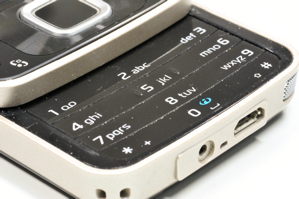Radio Equipment Directive
Radio measurements
As of 2000 April 8th, within the European Economic Area (EEA), Radio and Telecommunications Terminal Equipment (R&TTE) is brought under the CE marking scheme which has now been converted to the Radio Equipment Directive (RED). The RED enables free trade in the EEA. Until then a type approval was required for equipment like telephones, mobiles e.g. DECT, GSM and DCS1800, transmitters like remote controls etc.

Now, like most other equipment, the type approval is replaced by a self certification scheme in accordance to the Radio Equipment Directive (2014/53/EU) formerly known as (99/5/EC). This results in the situation where the producer or importer is fully responsible for the conformity of its products. To place products on the market the equipment not only needs to fulfill the essential requirements of the directive but a number of administrative requirements as well. More information can be found in the guideline to the RED. Kiwa Dare performs measurements and examinations in compliance with an array of International Standards.
Essential Requirements
The following essential requirements are applicable to all apparatus:
- The protection of the health and the safety of the user and any other person, including the objectives with respect to safety requirements contained in Directive 2014/35/EU formerly known as 73/23/EEC, but with no voltage limit applying.
- The protection requirements with respect to electromagnetic compatibility contained in Directive 2014/EU/30 formerly known as 89/336/EEC.
In addition, radio equipment shall be so constructed that it effectively uses the spectrum allocated to terrestrial/space radio communication and orbital resources so as to avoid harmful interference.
In accordance with the procedure laid down in Article 15 the Commission may decide that apparatus within certain equipment classes or apparatus of particular types shall be so constructed that:
- It interworks via networks with other apparatus and that it can be connected to interfaces of the appropriate type throughout the Community; and/or that
- It does not harm the network or its functioning nor misuse network resources, thereby causing an unacceptable degradation of service; and/or that
- It incorporates safeguards to ensure that the personal data and privacy of the user and of the subscriber are protected; and/or that
- It supports certain features ensuring avoidance of fraud; and/or that
- It supports certain features ensuring access to emergency services; and/or that
- It supports certain features in order to facilitate its use by users with a disability.

Administrative Requirements
In addition to the essential requirements mentioned above the equipment should fulfill a number of administrative requirements as well. These requirements are:
- Applying one of the compliance procedures;
- Adding the declaration of conformity (DOC = Declaration of Conformity) to the product;
- Affixing the CE mark and, if required by radio equipment, the "Alert' character;
- Applying a type, batch or serial application and the name of the manufacturer on the equipment;
- Indicating the use of the equipment so that the user can use it the proper way. If necessary, information about the construction of the equipment must be provided;
- In case of radio equipment it must be stated on the packaging and in the instructions where and how the equipment should be used. Marking(s) on the device(s) should make it clear to the user:
- What the restrictions are on the use in particular states;
- Whether a permit is required for use of frequency space.
- Indicating for which termination equipment of the public telecommunications network the peripheral equipment is used.
Technical Competence
Kiwa Dare has experienced engineers as well as the required equipment to perform radio and telecom measurements and examinations. Measurements are performed in accordance to EN and ETS standards for radio as well as EMC aspects.
Kiwa Dare is affiliated to the Radio and Telecommunications Terminal Equipment Compliance Association.
Standards
Kiwa Dare performs measurements in accordance to the standards mentioned below. For an overview of Harmonized Standards click here.
| Standard | Description | ||
| ETS 300 086 | Radio Equipment and Systems; Land mobile Service; Technical characteristics and test conditions for radio equipment with an internal or external RF connector intended primarily for analogue speech. | ||
| ETS 300 113-1 | Electromagnetic compatibility and Radio Spectrum Matters (ERM); Land mobile Service; Radio equipment intended for the transmission of data (and speech) and having an antenna connector; Part 1 Technical characteristics and methods of measurement. | ||
| ETS 300 135 | Radio Equipment and Systems; Angle-modulated Citizens' Band radio equipment (CEPT PR 27 Radio Equipment).Technical characteristics and methods of measurement. | ||
| ETSI EN 300 220-3 | Electromagnetic compatibility and Radio Spectrum Matters (ERM); Short Range Devices (SRD); Radio equipment to be used in the 25 MHz to 1.000 MHz frequency range with power levels ranging up to 500 mW. | ||
| ETS 300 279 | Radio Equipment and Systems (RES); Electro Magnetic Compatibility (EMC) Standard for private land Mobile Radio (PMR) and ancillary equipment (speech and/or non speech). | ||
| EN 300 330 | Electromagnetic compatibility and Radio Spectrum Matters (ERM); Short Range Devices (SRD); Technical characteristics and test methods for radio equipment in the frequency range 9 kHz to 25 MHz and inductive loop systems in the frequency range 9 kHz to 30 MHz. | ||
| ETS 300 384 | Radio Broadcast systems; Very High Frequency (VHF), frequency modulated, sound broadcasting transmitters. | ||
| ETS 300 440 | Radio Equipment and Systems (RES); Short range devices; Technical characteristics and test methods for radio equipment to be used in the 1 GHz to 25 GHz frequency range. | ||
| ETS 300 698 | Radio Equipment and Systems (RES); Radio telephone transmitters and receivers for the maritime mobile service operating in the VHF bands used on inland waterways; Technical characteristics and methods of measurement. | ||
| EN 300 683 | Radio Equipment and Systems (RES); Electro Magnetic Compatibility (EMC) Standard for Short Range Devices (SRD) operating on frequencies between 9 kHz to 25 GHz. | ||
| EN 300 339 | Electromagnetic compatibility and Radio Spectrum Matters (ERM); General Electro Magnetic Compatibility (EMC) for radio communications equipment. | ||
| ETSI EN 301 489-1 | Electromagnetic compatibility and Radio Spectrum Matters (ERM); Electro Magnetic Compatibility (EMC) Standard for radio equipment and services; part 1: Common technical requirements. | ||
| ETSI EN 301 489-3 | Electromagnetic compatibility and Radio Spectrum Matters (ERM); Electro Magnetic Compatibility (EMC) Standard for radio equipment and services; part 3: Specific conditions for Short-Range Devices (SRD) operating on frequencies between 9 kHz and 40 GHz. |
For more information about measurements under the R&TTE Directive please fill out our contact form below.